“As for me, I am tormented with an everlasting itch for things remote. I love to sail forbidden seas…” ― Herman Melville, Moby-Dick or, The Whale
In 2014, Ger Tysk of Houston. Texas, was recently out of the US Air Force and ready to take on a new career. An avid reader, she picked up a copy of Moby Dick or, The Whale by the American writer Herman Melville. This story of a notoriously elusive white whale that sinks the whaling ship, Pequod, pivoted Ger’s imagination towards a career at sea. Ger was glued to the pages, yearning to see whales and wildlife while sailing the open ocean.
Soon after finishing Moby Dick, Ger was determined to sail the high seas, so she signed up to join the crew of a tall ship. Her first sailing vessel was the last wooden whaling vessel in the world, Mystic Seaport Museum’s Charles W. Morgan, built in 1841.
Ger joined the crew of the 106-foot long Charles W. Morgan for a short trip up the East Coast. Fully-rigged, the Charles W. Morgan transited up the coastline with 7,134 square feet of sail. Down below, Ger observed the huge try-pots used for converting blubber into whale oil and cramped quarters in which the crew lived. It was as if she had stepped into the pages of Moby Dick and on board the Pequod.
Known as a “lucky ship,” the Charles W. Morgan’s rich history spans every corner of the globe in the pursuit of whales. An 80-year whaling career consisted of 37 voyages, most lasting three years or more and filled with countless sea stories of crushing Arctic ice, rounding Cape Horn, and surviving hurricanes.
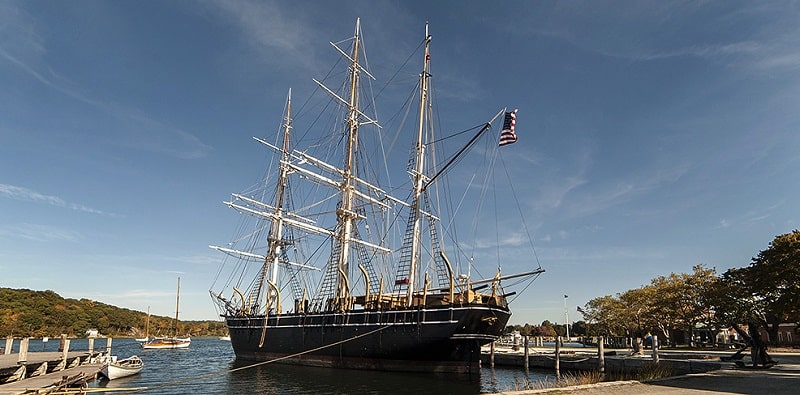
The Charles W. Morgan is the very last vessel to exist of an American whaling fleet that once numbered more than 2,700 vessels. She was built and launched in 1841, making her America’s oldest commercial ship still afloat.
Beyond the sea stories, Ger was also surprised to hear that she too could sail on tall ships for a living. Ger recalls that trip with excitement, noting how she was influenced by the female crew members, “I was especially inspired by all the female sailors I met on board who were working at what was for centuries seen as a man’s job. Seeing women climbing the rigging, hauling on lines, and navigating the vessel was really inspiring to me.”
Since that first trip on board the Charles W. Morgan, Ger has continued to sail on tall ships out of Mystic Seaport, working as a deckhand and cook. For the past four years she has acquired enough sea time to earn a USCG mate license for working on near coastal, auxiliary sailing vessels of 200 gross tons and a USCG master’s license of 100 gross tons for working on auxiliary sailing vessels on inland waters and the Great Lakes.
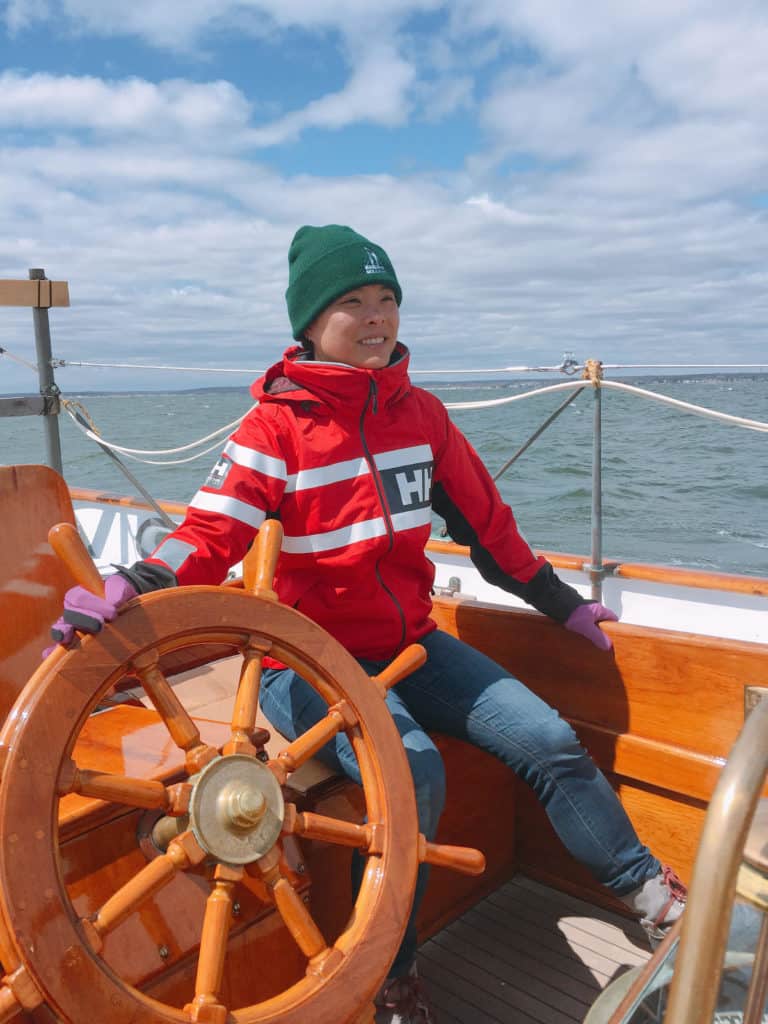
Deckhand Ger Tysk at the Helm of the schooner Brilliant
Ger spent the last few summers aboard the schooner Brilliant, owned and operated by Mystic Seaport Museum. Designed by legendary yacht designer Olin Stephens and built in 1932 as a private yacht by Nevins Shipyard in New York, Brilliant is a 62-foot, wooden traditional schooner.
Brilliant’s history is unique, playing a large role in the local economy during the Great Depression. The legend states that she was built to sail around the world, so no expense was spared in her construction. Brilliant’s construction kept the shipyard open, employing many during this hard time in American history.
A traditional gaff topsail schooner with a bright white hull and gold lettering that graces her transom, Brilliant was built for beauty and speed. She was launched on April 23rd, 1932, and shortly after, set sail in the Bermuda Race.
On the first night, she lost her Genoa jib, a type of large sail that extends from the bow past the mast. Brilliant finished just behind Highland Light, a vessel that broke the course record, a loss for Brilliant that may have been a record-breaking win if it was not for losing the jib.
Brilliant also raced across oceans with record speed. In 1933, she left Nantucket Lightship to sail to Bishop Rock Light, England. She achieved the unimaginable at the time by arriving at Bishop Rock in 15 days, 1 hour, and 23 minutes.
In 1953, Brilliant was donated to Mystic Seaport Museum to operate as a training vessel for youth. Hosting 284,000 visitors annually, Mystic Seaport Museum is the nation’s leading maritime museum that was founded in 1929 with the intent to gather and preserve artifacts of America’s seafaring past. Since its founding, the Museum has flourished as a center for research and education. Its mission is to “inspire an enduring connection to the American maritime experience.”
During the summer months on the waters of Southern New England, Brilliant’s crew takes nine teenagers per week sailing to learn seamanship, navigation, and life at sea. At the end of each weekly voyage, the youth walk away with skills in teamwork, as well as a new-found discipline on the water.
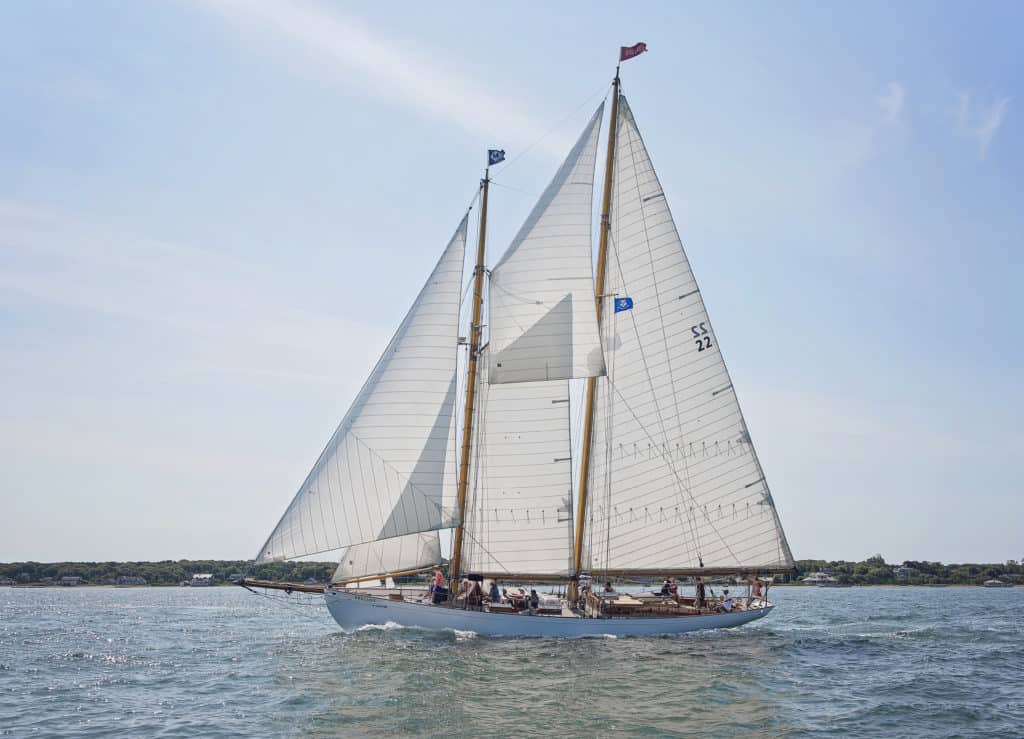
The schooner Brilliant is an offshore classroom for Mystic Seaport’s education programs, offering people of all ages the opportunity to learn about sailing. Donated in 1953 to the program, Brilliant has since sailed with more than 11,000 students navigating the equivalent of five times around the earth.
At Brilliant’s helm for a trip last fall stood Captain Hadley Neale, a graduate of Maine Maritime Academy. Captain Neale filled in as a relief captain, and was only the second female to take this role. The mate was Madeleine Weisman, who was finishing her second season aboard as mate. High school students with an an interest in maritime careers from the Sound School, a vocational aquaculture school based in New Haven, Connecticut, were on board for a 4-day trip.
This was the first voyage for Brilliant to set sail in the hands of an all-female team. For Ger, it was a surprise to think that Brilliant, built in 1932, had never seen a crew entirely of female sailors. A first generation American with a heritage in Hong Kong, this voyage represented even more than the disruption of gender norms. Ger adds, “As a person of color working on the water, I think it was extra special for us to show the students, especially the minority and female students, that it is possible to break barriers in any industry.”
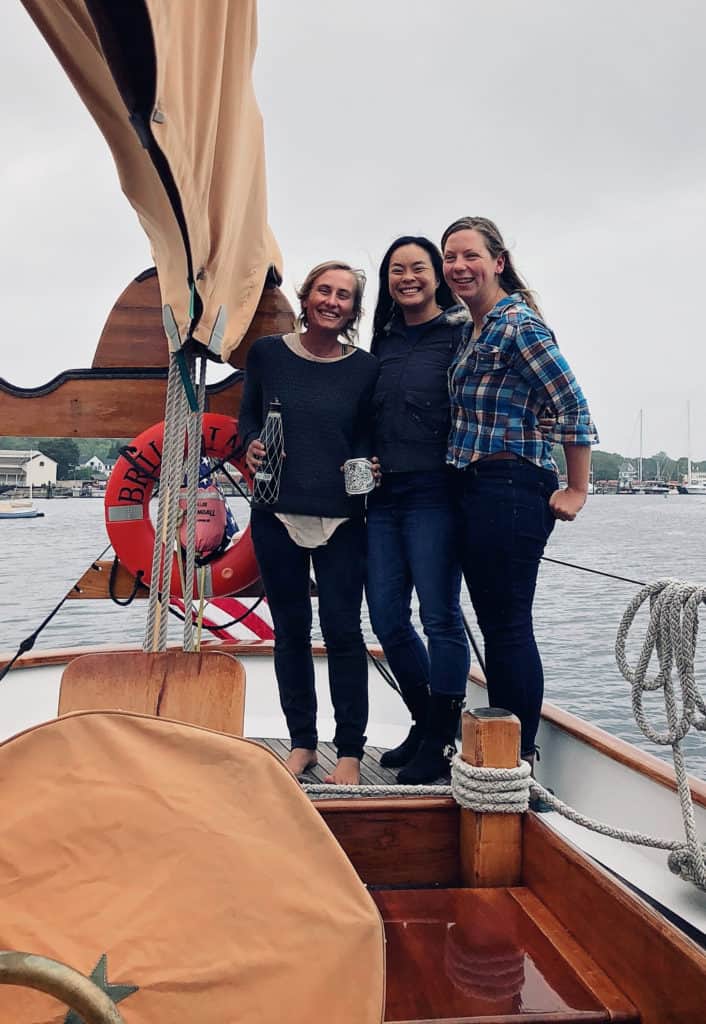
On board the schooner Brilliant, the first all-female crew: Captain Hadley Neale, Deckhand Ger Tysk, and Mate Madeleine Weisman.
Since joining the fleet at Mystic Seaport Museum in 1953, 10,000 students have set sail and steered Brilliant on a course that is equivalent to circumnavigating the globe five times. This remarkable vessel is in excellent condition. Brilliant is a testament to the designers and craftsmen of Nevins’ yard in 1932, as well as the maintenance and care by Mystic Seaport Museum.
Communicating with Ger, she has immense pride for Brilliant and the vessel’s history. This pride fuels Ger’s career to seek more adventures beyond the summer months in Long Island Sound. Recently, packed up her sea bag to head offshore again. This time, she flew to the Caribbean to join the crew of a more modern vessel, the Corwith Cramer, a brigantine built in 1987 and owned by the Sea Education Association (SEA) sailing school, commonly known as SEA Semester.
Ger will spend several months on board, working as a senior steward. While her main duties include managing galley operations, provisions, and waste management, she still gains immense satisfaction each time her vessel starts making way. Beaming, she shares, “Sailing has been the most rewarding thing I’ve done as a career…. the physical act of setting the sails and then seeing the instant feedback as the wind propels the ship through the water brings me immense satisfaction.”
The intrinsic reward of working at sea, once found on the pages of Moby Dick, has become a permanent part of Ger’s life. It is an unconventional career this US Air Force Veteran once thought she could only dream about.
The Women Offshore Foundation is an online organization and resource center for a diverse workforce on the water. Its mission is to propel women into meaningful careers through access to a worldwide community and professional development resources, while raising awareness amongst industry leaders and decision makers about issues affecting women on the water. Contact Women Offshore today: [email protected].

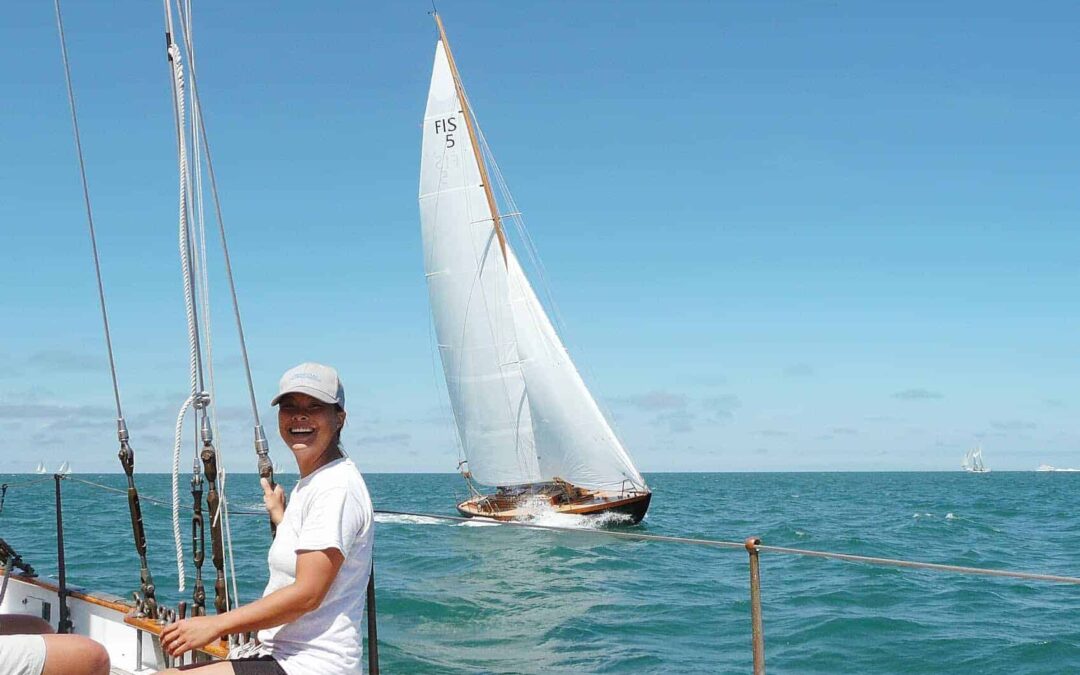



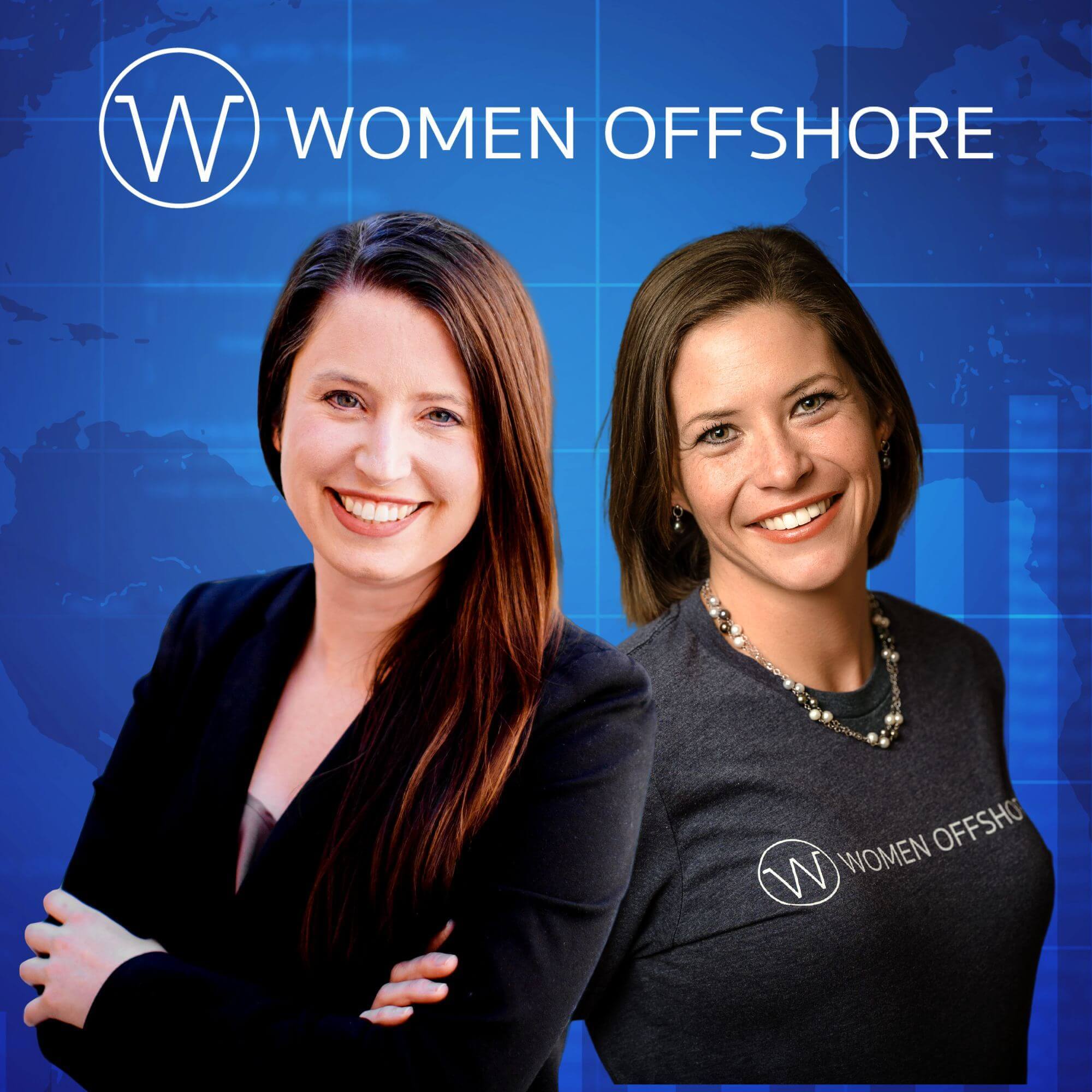

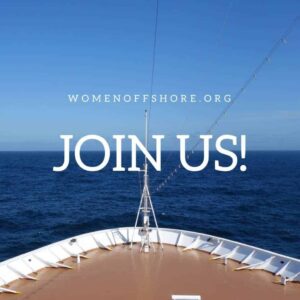
Recent Comments